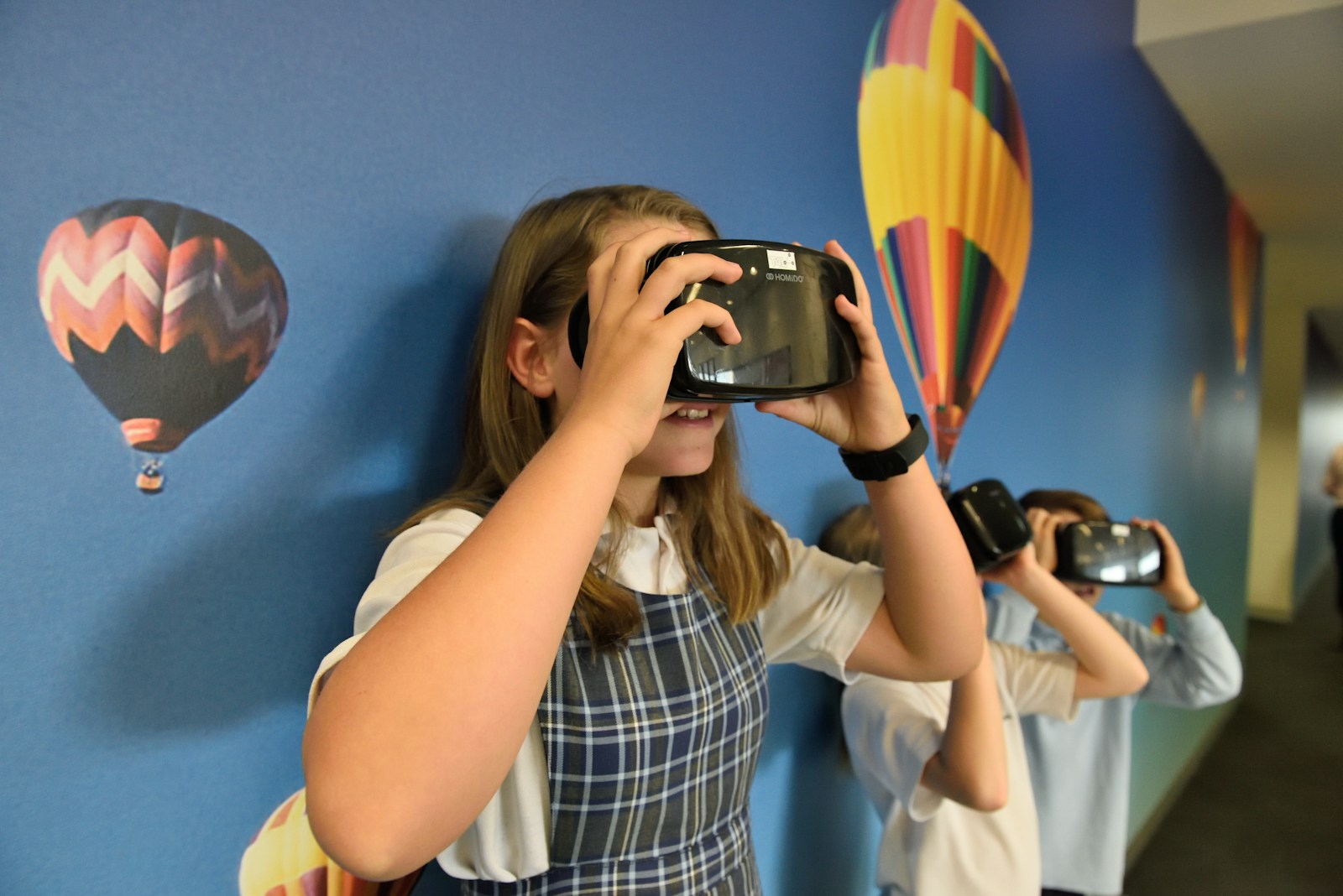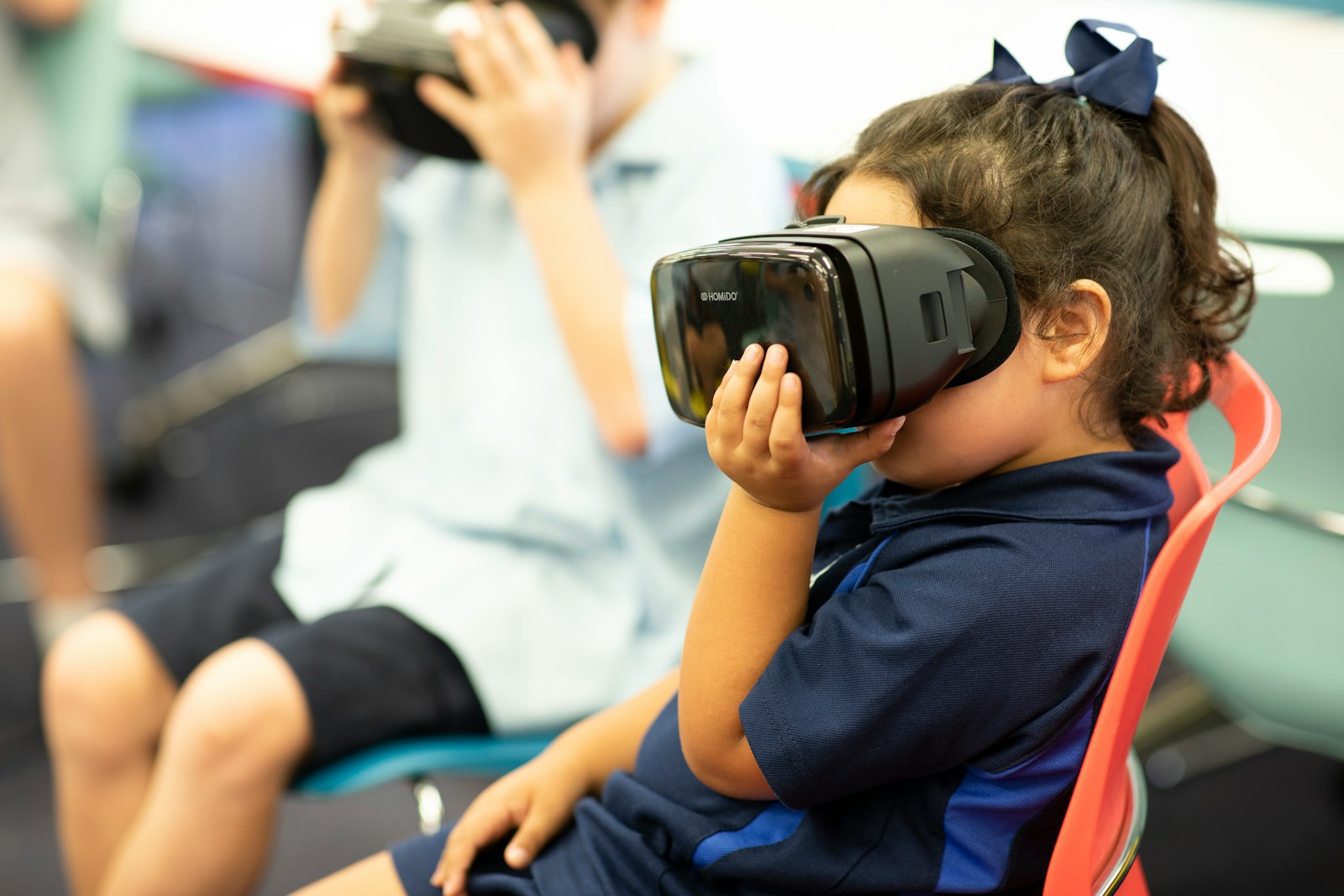
Virtual reality (VR) offers numerous advantages for enhancing the educational experience.
By immersing students in realistic and interactive simulations, virtual reality enables them to explore complex concepts in a tangible and engaging manner. This hands-on approach facilitates deeper understanding and retention of information, making learning more effective and enjoyable for students.
Moreover, virtual reality in education transcends traditional boundaries of time and space, allowing students to access educational content from anywhere in the world. This global connectivity enables collaborative learning experiences, where students can interact with peers and experts across different cultures and geographic locations. As a result, virtual reality not only enhances knowledge acquisition but also fosters communication, critical thinking, and problem-solving skills among students.
Challenges of Implementing Virtual Reality in Educational Settings
One of the primary challenges faced in the implementation of virtual reality in educational settings is the cost associated with the technology. High-quality VR equipment can be expensive, making it difficult for schools with limited budgets to adopt this immersive learning tool. Additionally, the maintenance and updating of VR systems require ongoing investment, posing financial barriers for many educational institutions.
Another obstacle in incorporating virtual reality in education is the lack of adequate training for educators. Many teachers may not have prior experience or expertise in using VR technology for teaching purposes. Without proper training and support, educators may struggle to effectively integrate virtual reality into their lesson plans, hindering the successful implementation of this innovative educational tool.
Impact of Virtual Reality on Student Engagement
Virtual reality (VR) has proven to be a game-changer in the field of education, significantly enhancing student engagement. By immersing students in a virtual environment, VR triggers a sense of curiosity and interactivity that traditional teaching methods sometimes lack. This heightened engagement leads to a more profound understanding of the subject matter as students become active participants in their learning journey.
Moreover, VR enables students to explore complex concepts in a hands-on manner, making abstract ideas more tangible and easier to grasp. By fostering a sense of presence and involvement, VR captivates students’ attention and stimulates their cognitive processes. This active learning approach not only boosts engagement but also encourages critical thinking and problem-solving skills as students navigate through immersive experiences.
Enhancing Learning Outcomes Through Immersive Experiences
Virtual reality (VR) technology has revolutionized the educational landscape by providing immersive experiences that enhance learning outcomes. By simulating real-world scenarios, students are actively engaged in the learning process, leading to a deeper understanding of complex concepts. Through virtual field trips and interactive simulations, students can explore subjects like never before, fostering a sense of curiosity and exploration that traditional teaching methods may not always achieve.
The ability of VR to create interactive and engaging environments allows educators to tailor learning experiences to meet the diverse needs of students. By incorporating VR into lesson plans, teachers can cater to various learning styles, making education more inclusive and accessible. The hands-on nature of VR experiences not only boosts student engagement but also improves retention rates, as students are more likely to remember information that they have actively interacted with in a virtual setting.
Virtual Reality Applications Across Different Subjects
Virtual reality (VR) has proven to be a versatile tool with applications across various educational subjects. In science classes, VR simulations can provide students with the opportunity to explore complex scientific concepts in a hands-on and interactive manner. For example, students can immerse themselves in a virtual laboratory to conduct experiments that may not be feasible in a traditional classroom setting. This hands-on experience allows students to better understand scientific principles and processes.
In history and social studies classes, VR can transport students to different time periods and locations, allowing them to visualize and experience historical events firsthand. By immersing themselves in a virtual recreation of a historical site or moment, students can gain a deeper understanding of the context and significance of past events. This experiential learning approach can make history come to life for students, enhancing their engagement and retention of key information.

Addressing Accessibility and Equity Issues in Virtual Reality Education
Access to virtual reality (VR) technology in educational settings has the potential to widen the educational divide between students from different socioeconomic backgrounds. The high cost of VR equipment and software may prevent students in underprivileged schools from experiencing the benefits of immersive learning. To address this issue, schools must seek funding opportunities to provide equal access to VR experiences for all students, regardless of their financial status. Initiatives such as grants, donations, or partnerships with technology companies can help bridge the gap and ensure that every student has the opportunity to engage with VR technology in the classroom.
Furthermore, ensuring that VR educational content is inclusive and accessible to students with diverse learning needs is paramount. Schools must consider factors such as providing audio descriptions for visually impaired students, incorporating subtitles for students with hearing impairments, and designing VR experiences that cater to different learning styles. By prioritizing accessibility in VR education, schools can create a more inclusive learning environment where every student has the opportunity to benefit from the immersive and interactive nature of VR technology.
Training Educators to Utilize Virtual Reality Technology Effectively
Educators play a pivotal role in harnessing the potential of virtual reality technology to enhance the learning experience of students. With the rapid integration of virtual reality into educational settings, it has become imperative for educators to acquire the necessary skills and knowledge to effectively utilize this innovative technology. Training programs tailored to equip educators with the essential competencies in integrating virtual reality into their teaching practices have become increasingly popular.
Moreover, understanding how to create immersive and engaging virtual reality content that aligns with the curriculum and educational objectives is crucial for educators to maximize the benefits of this technology. By providing educators with hands-on training and opportunities to experiment with virtual reality tools and platforms, educational institutions can empower them to develop creative and interactive learning experiences for their students. Ultimately, training educators to leverage virtual reality technology effectively can lead to increased student engagement, improved learning outcomes, and a more dynamic educational environment.
Evaluating the Effectiveness of Virtual Reality in Education
Virtual reality (VR) technology has been increasingly integrated into educational settings as a means to enhance student learning experiences. The evaluation of VR effectiveness in education is crucial to determine the impact it has on student engagement, knowledge retention, and overall academic performance. Researchers have conducted numerous studies to assess how VR applications contribute to the learning process and if they offer a more immersive and interactive approach compared to traditional teaching methods.
One of the key aspects of evaluating the effectiveness of VR in education is examining how it aligns with curriculum objectives and learning outcomes. Educators need to assess whether VR experiences enhance students’ understanding of complex concepts and facilitate critical thinking skills. Additionally, evaluating the usability and accessibility of VR technology in different educational contexts is essential to ensure that all students can benefit from its use. Ultimately, ongoing evaluation and research are fundamental in determining the long-term impact of VR on education and in shaping future pedagogical practices.
Future Trends and Developments in Virtual Reality Education
Virtual reality (VR) is poised to revolutionize the landscape of education in the coming years. With advancements in technology and increased accessibility of VR devices, we can expect to see a surge in the integration of immersive experiences into learning environments. As the cost of VR hardware continues to decrease and the quality improves, more educational institutions will embrace this technology to provide students with engaging and interactive learning opportunities.
Furthermore, the development of augmented reality (AR) and mixed reality (MR) applications will expand the possibilities for incorporating VR into education. These technologies will enable educators to create more dynamic and personalized learning experiences for students, enhancing their understanding and retention of complex concepts. By leveraging the capabilities of AR and MR in combination with VR, schools can cater to diverse learning styles and better prepare students for the challenges of the future.
Case Studies of Successful Virtual Reality Integration in Schools
Virtual reality (VR) has shown promising results in enhancing student learning experiences in schools. For instance, a primary school in California successfully integrated VR technology into their science curriculum. Students were able to explore the solar system in a fully immersive VR environment, which not only deepened their understanding of planetary systems but also sparked their curiosity and passion for astronomy. As a result, students showed increased engagement, higher retention of knowledge, and improved critical thinking skills.
Similarly, a high school in Japan used VR to bring history lessons to life by virtually transporting students back in time to historical events such as World War II. This hands-on approach allowed students to witness firsthand the impact of historical events, fostering empathy and a deeper connection to the past. The use of VR not only made the learning experience more interactive and engaging but also improved student motivation and participation in history classes. These successful case studies demonstrate the immense potential of VR technology in revolutionizing traditional educational practices and providing students with immersive and impactful learning experiences.
